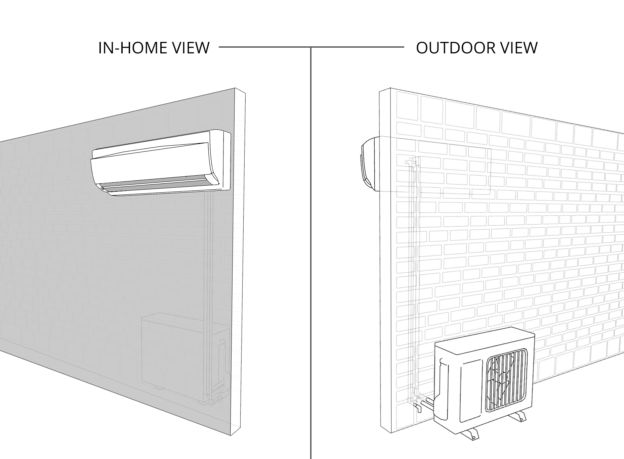Thinking of getting a portable heater to cut heating costs this winter?
Unfortunately, using one might not lower your utility costs as much as you’d like.
Relative to the limited amount of heat they put out, portable heaters use more energy than other types of heating systems, such as a gas furnace or a heat pump.
In this blog, we’ll explain the following:
- How much electricity a portable heater uses
- Tips for using a portable heater (if you decide to use one)
- An alternative, energy-efficient option for heating one room
Need recommendations on an energy-efficient heating system for your home? Our comfort specialists give honest recommendations based on your budget and heating needs.
How much electricity a portable heater uses
Using a mid-sized, 1,000-watt space heater will add $30 to $80 per month to your electric bill, depending on how long you leave the space heater on. (The price range reflects the cost of using a portable heater between 8 and 24 hours a day.)
When you compare that operational cost to more efficient heating systems, such as a heat pump or gas furnace, it’s a lot of money considering a space heater only produces a small amount of heat. In comparison, it costs anywhere from $50 to $100+ per month to run a heat pump or gas furnace. And these whole-home systems provide heat to every room in your house—not just one small area.
Why are portable heaters so expensive to operate?
Most space heaters rely on electrical resistance heating, which creates heat entirely from scratch using electricity. Because the cost of electricity is high, the cost to operate a space heater is expensive.
Even though it is more expensive to operate, a space heater may still be a good fit for your heating needs. For example, if your home doesn’t already have a whole-home heating system, it could be cost-prohibitive to install a gas furnace or a heat pump for the first time. Or, if you already have a whole-home heating system, a space heater can be used to provide supplemental heat to an especially cold room for short periods of time.
If you decide to purchase a space heater, we’ll share some tips on how to use it efficiently so you can lower your heating costs as much as possible.
Tips for using a portable heater (if you decide to use one)
- Bigger isn’t necessarily better: When you purchase a portable heater, you should only buy one with the appropriate wattage (power) for the space you want to be heated. Buying an unnecessarily large space heater will only result in higher energy costs. Portable heaters will have a sizing guide to help you find the right size system for the space you want to be heated.
- Use a portable heater with your whole-home heating system: If you already have a whole-home heating system, you can lower the thermostat 7 to 10 degrees and use a portable heater for a short time as a supplemental heat source. Using a portable heater for short times isn’t costly, and since the energy consumption of your whole-home heating system will be lower, your overall heating costs will not be very expensive.
- Keep the space heater away from flammable objects: More than 25,000 residential fires every year are associated with space heaters. To prevent an accidental fire, keep the space heater away from clothing, rugs and curtains (anything that can burn). It’s also a good idea to purchase a model with a “tip-over switch,” which automatically shuts down the heater if it gets knocked over.
- Only use the space heater while you’re in the room: For safety reasons, it’s never a good idea to leave a space heater plugged in for long periods of time unattended. Plus, it only makes sense to use a portable heater if you’re next to it. Otherwise, you’re paying for heat you don’t get to enjoy.
An alternative, energy-efficient option for heating one room
Only need to heat one room, but don’t want the high operating costs of a space heater?
If so, a ductless heat pump could be a good solution for you.
A ductless heat pump is designed to heat one room, and it takes up even less floor space than a portable heater (the indoor unit of a heat pump is installed on a wall, as seen in the image below).

The indoor and outdoor units of a ductless heat pump system
Although the upfront cost to install a ductless heat pump is more expensive than a portable heater, it has lower operating costs and provides more even temperatures throughout the room. Plus, a ductless heat pump can both heat and cool your home, so you can use it year-round, not just during winter.
Learn more about ductless systems by reading our blog, “How Much Does it Cost to Install a Ductless AC in Texas?”
Need a heating system for your Texas home?
Whether you need heated air for one room or your entire house, our comfort specialists can recommend the perfect heating system for you. At Reliable Air, we don’t use pushy sales tactics to sell you equipment you don’t need. We provide clear answers to your questions and honest recommendations based on your budget and heating needs.
Learn more about the different types of whole-home heating systems we offer by visiting our heat pump and furnace installation pages.

